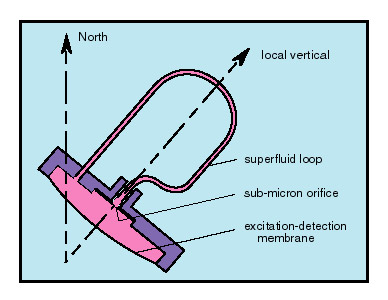 |
In a collaboration at
Saclay, Paris, we have worked on an experiment [PRL78, 3602 (1997)]
in which the effect of Earth rotation on a loop of
superfluid 4He was
measured with the help of quantum phase slippage. The
principle of this experiment (see FIG.) is based on the
possibility to measure with great accuracy the change in
circulation of the superfluid velocity around a loop using
a hydromechanical Helmholtz resonator. Detailed analysis
of critical velocity distributions for phase slips in
opposite directions was employed to measure the rotation
velocity of the Earth to a resolution of better than 1%.
This work gives a nice illustration of how phase coherence
in the superfluid can be utilized to measure extremely
small velocity circulations. |

